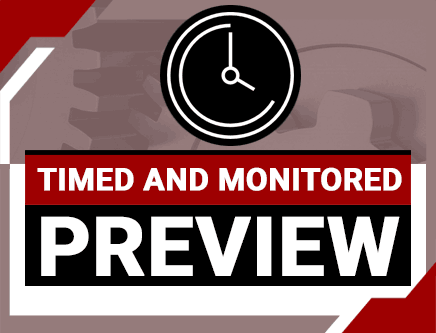Engineering Ethics: The Fukushima Nuclear Plant Disaster (Ohio T&M)
Credit: 1 PDH
Subject Matter Expert: Edward P. Brunet, Jr., P.E.
In Engineering Ethics: The Fukushima Nuclear Plant Disaster , you'll learn ...
- Basic operating premise of nuclear reactor cooling and safety systems
- How the location of the backup power systems contributed to the disaster
- Why engineers and company management hesitated to implement drastic intervention methods soon after the tsunami struck
- Ethical considerations surrounding the actions and decisions of Tokyo Electrical Power Company (TEPCO engineers)
Overview

To meet the Ohio Board's intent that online courses be "paced" by the provider, a timer will be used to record your study time. You will be unable to access the quiz until the required study time of 50 minutes has been met.
Credit: 1 PDH
Length: 21 pages
On Friday, March 11, 2011, a magnitude 9.0 earthquake hit Japan. It was the strongest earthquake ever recorded in Japan and one of the strongest ever recorded in the world. The earthquake triggered a tsunami that pounded the coastal areas of Japan with waves as high as 30 feet.
The tsunami inundated the Fukushima Daiichi No. 1 (Daiichi) plant, owned and operated by the Tokyo Electrical Power Company (TEPCO). The plant suffered a series of hydrogen explosions and core meltdown. Radioactive particles from released material settled downwind from the plant and spread to other parts of the globe.
According to the Nuclear Accident Independent Investigation Committee (NAIIC):
“The earthquake and tsunami of March 11, 2011 were natural disasters of a magnitude that shocked the entire world. Although triggered by these cataclysmic events, the subsequent accident at the Fukushima Daiichi Nuclear Power Plant cannot be regarded as a natural disaster. It was a profoundly manmade disaster – that could and should have been foreseen and prevented. And its effects could have been mitigated by a more effective human response.”
It’s important to note that the earthquake and tsunami activated emergency systems in five nuclear power stations in the region and some of the plants sustained damage from the natural disasters. Yet only the Daiichi plant experienced catastrophic failure. What did the other four plants do correctly—or why did the Daiichi plant fail?
This course will examine the major “errors and willful negligence” by TEPCO’s engineers and management that led to the disaster. Although this disaster was in the nuclear energy industry and occurred in Japan, the lessons to be learned from it are universal. We will review the critical decisions made by TEPCO’s engineers and management in the context of the National Society of Professional Engineers’ (NSPE) Code of Ethics.
Specific Knowledge or Skill Obtained
This course teaches the following specific knowledge and skills:
- The logic behind siting decisions made during the design of the Daiichi plant
- The implications of TEPCO building the facility to the specifications of General Electric's (GE) Mark I design, without modification
- The operating principle behind a Mark I containment system
- Chronology of events and critical decisions as the disaster unfolded
- Why the primary and backup cooling systems failed
- Why TEPCO was reluctant to use seawater as a last resort for cooling
- Key findings of the Japanese commission that investigated the disaster
- How TEPCO's company culture and even the broader Japanese culture may have contributed to the scale of the accident
- Lessons to be learned from this disaster that can be applied to future projects
Certificate of Completion
You will be able to immediately print a certificate of completion after passing a multiple-choice quiz consisting of 10 questions. PDH credits are not awarded until the course is completed and quiz is passed.
| This course is applicable to professional engineers in: | ||
| Alabama (P.E.) | Alaska (P.E.) | Arkansas (P.E.) |
| Delaware (P.E.) | District of Columbia (P.E.) | Florida (P.E. Other Topics) |
| Georgia (P.E.) | Idaho (P.E.) | Illinois (P.E.) |
| Illinois (S.E.) | Indiana (P.E.) | Iowa (P.E.) |
| Kansas (P.E.) | Kentucky (P.E.) | Louisiana (P.E.) |
| Maine (P.E.) | Maryland (P.E.) | Michigan (P.E.) |
| Minnesota (P.E.) | Mississippi (P.E.) | Missouri (P.E.) |
| Montana (P.E.) | Nebraska (P.E.) | Nevada (P.E.) |
| New Hampshire (P.E.) | New Jersey (P.E.) | New Mexico (P.E.) |
| New York (P.E.) | North Carolina (P.E.) | North Dakota (P.E.) |
| Ohio (P.E. Timed & Monitored) | Oklahoma (P.E.) | Oregon (P.E.) |
| Pennsylvania (P.E.) | South Carolina (P.E.) | South Dakota (P.E.) |
| Tennessee (P.E.) | Texas (P.E.) | Utah (P.E.) |
| Vermont (P.E.) | Virginia (P.E.) | West Virginia (P.E.) |
| Wisconsin (P.E.) | Wyoming (P.E.) | |


 Live support chat
Live support chat



